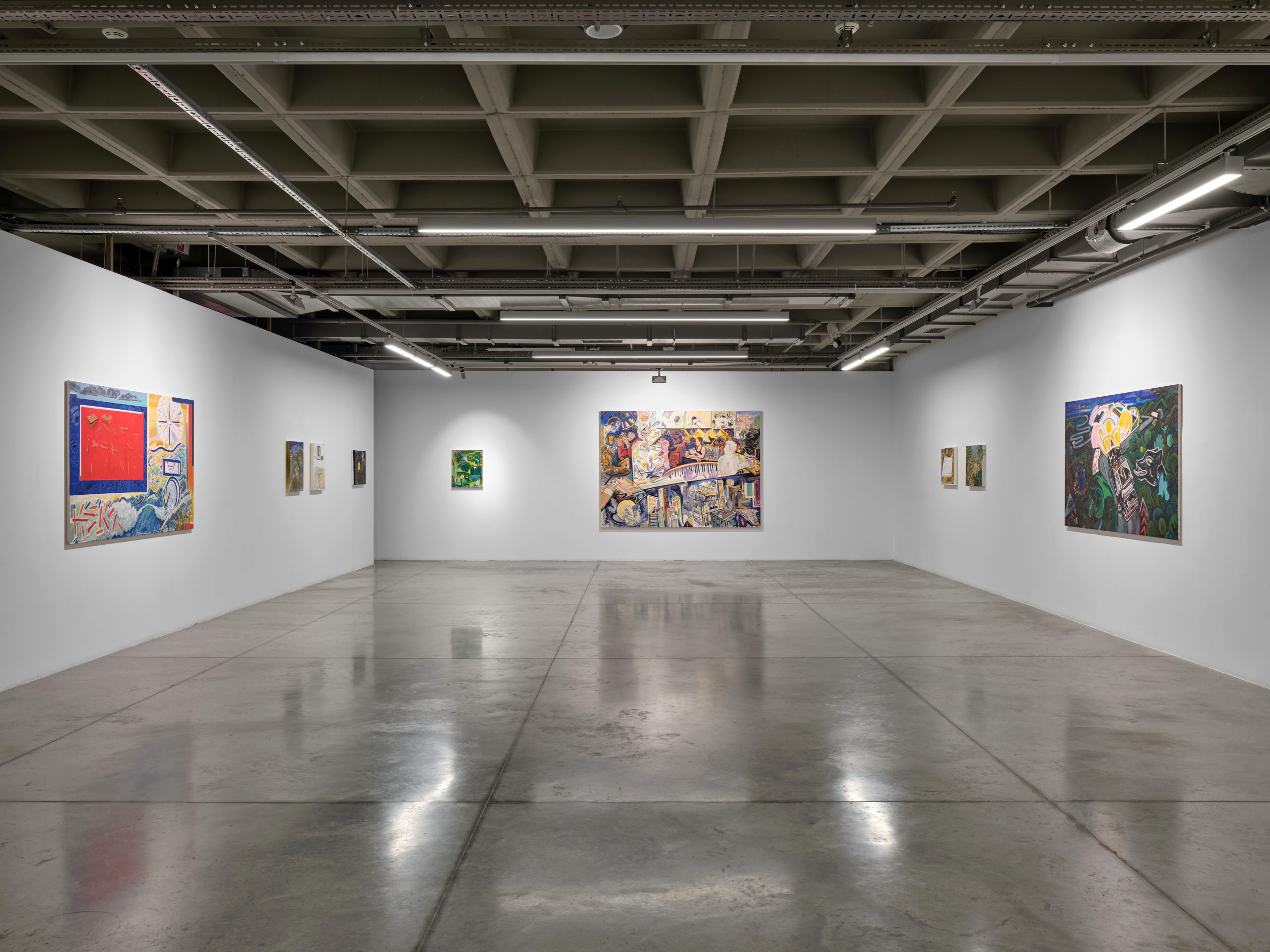Toygun Özdemir
Unforced Errors, Coincidences and Lost Years
January 10 – February 8, 2025
Unforced Errors, Coincidences and Lost Years by Toygun Özdemir will take place at Öktem Aykut from January 10th to February 8th, 2025. The opening will be on Friday, the 10th of January, between 18:30 – 20:30.
Unforced Errors, Coincidences and Lost Years brings together Özdemir’s new paintings created over the past three years. Özdemir’s distinctive painting style, characterized by his unique and rich repertoire of imagery, finds expression in a layered narrative across 22 works in this new series. While his previous exhibition, Golden Age, explored a retrospective gaze into the past, this exhibition seeks to refocus on the multifaceted narratives of individuals navigating the ebb and flow of the 21st century. With an openness to life’s flux and a heightened sensitivity, the characters depicted are cheerful, angry, melancholic, and sullen, intertwining and shifting from one painting to the next. These characters, who seem unable to find a comfortable corner in the world, find a moment of respite on Özdemir’s canvases. Drawing from a broad pool of references that spans from traditional Turkish-Islamic parables to contemporary experimental jazz, Özdemir’s visual language offers both his characters and viewers a possibility of reconciliation with themselves.
Unforced Errors, Coincidences and Lost Years pursues the themes Özdemir explored in his previous four one-person exhibitions and various fair and group exhibitions yet this time his approach involves a more mature boldness. This adamant pursuit expands Özdemir’s personal language to encompass social, historical, cultural, and political dimensions. The compositional choices in Özdemir’s earlier series are known to be exuberant and colorful as they are calculated and balanced. In Unforced Errors, Coincidences and Lost Years, they take on a noisier and more piercing pictorial quality. This heightened tension does not abandon the unpretentious comprehension in Özdemir’s narratives but transforms it into a deeper and more inclusive form. After all, simple mistakes are not limited to individuals—civilizations also make simple mistakes. Lost years do not belong only to artists but also to entire societies. Coincidences, however, only belong to the optimists.

